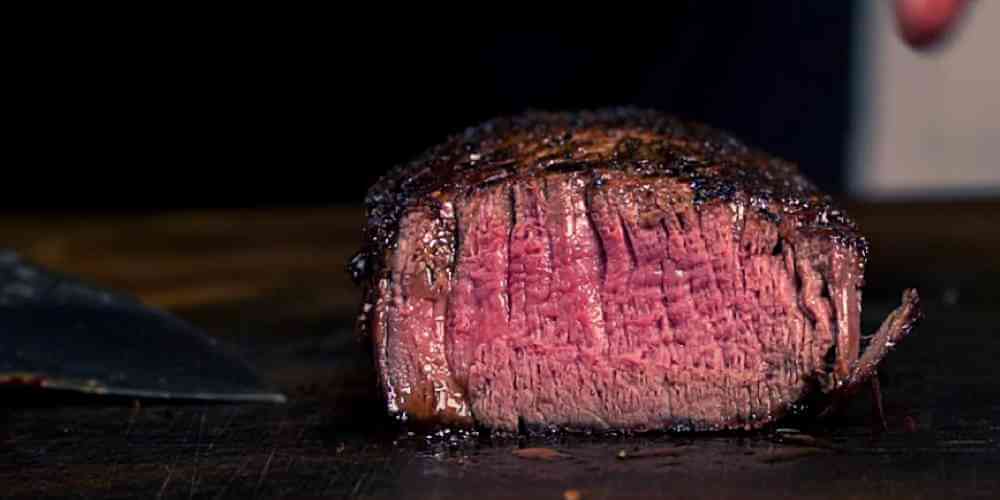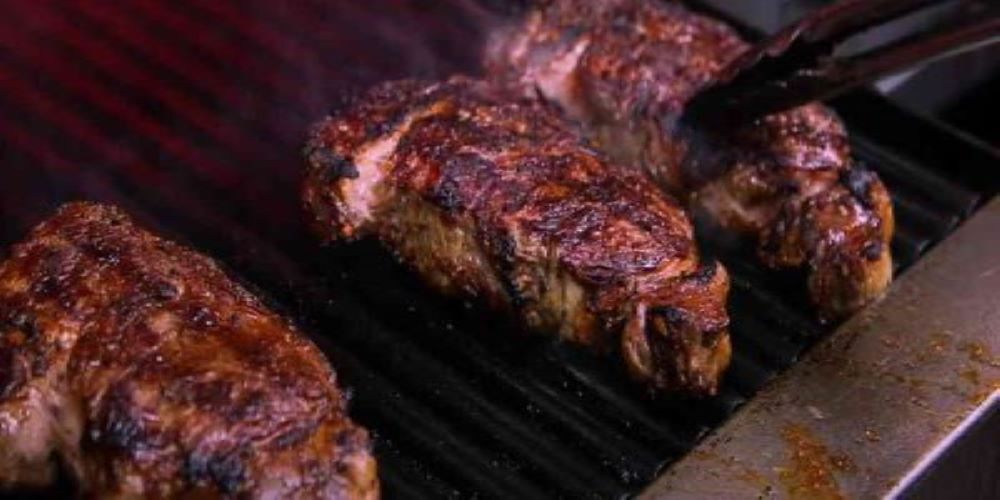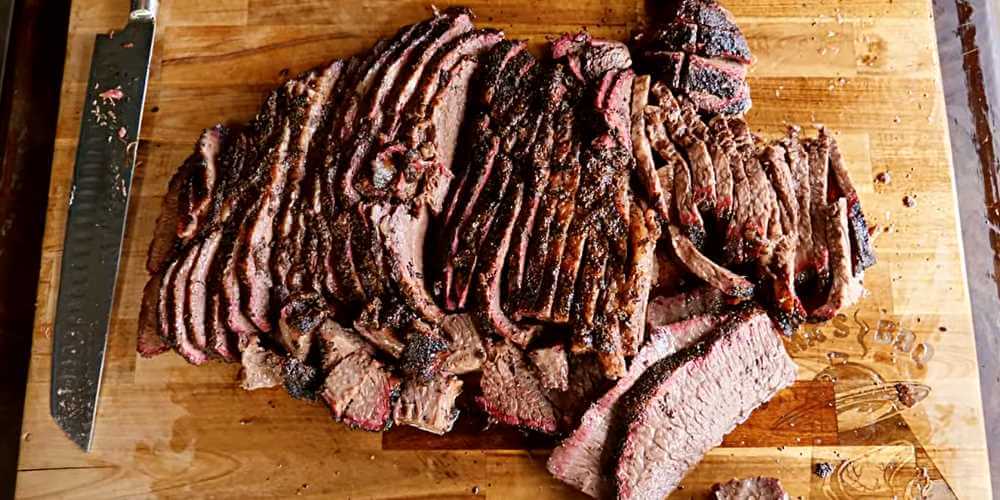Mastering Steak Temperatures Worldwide: A Culinary Exploration of Steak Temperatures Around the World

When I was in Argentina a few years ago, I was intrigued when my steak arrived practically mooing on the plate. “Carne azul” or blue beef is the norm in Argentina—charred on the outside yet cool and red on the inside. This experience sparked a fascination in me with how steak preferences differ dramatically across cultures. From rare in Japan to medium-well in parts of Europe, the humility or pride a nation shows in its beef seems closely tied to history, tradition, and culinary philosophy.
In this blog series, “Mastering Steak Temperatures Worldwide,” I take you on a sizzling tour across steak cultures near and far. We’ll uncover the origins behind preferred doneness levels in different countries, the classic cooking techniques used, and what it reveals about local identity. A rare insight into the geography, anthropology, and art of worldwide steak diplomacy awaits. Let’s turn up the heat!
Sizzling Through Steak Cultures Across the Globe
Join me on a meaty tour across steak-loving nations and regions worldwide. We’ll learn what “perfectly done” steak, scotch fillet, and beef steak means in different corners of the world, from rare Wagyu in Japan to well-done braai in South Africa. Don’t forget to bring your appetite for delicious meats and knowledge as we explore one continent at a time!
1 Latin America: Low, Slow and Full of Flavour
Known for its laidback asado culture, tender cuts like picanha and bife ancho are the stars in Latin American cooking. I’ll never forget the 14-hour-smoked brisket in Mexico City. As our host and chef, Juan, said, “The meat just falls apart in your hands! Who needs utensils?!”
Argentina: Redefining the Meaning of Rare
Deeply rooted in gaucho tradition, Argentines have honed the art of parilla grilling, their mastery evident in the coveted “jugoso” ribeye, a near-mythical cut enjoyed medium rare at family gatherings. If you want it on the more undercooked side, you can ask for ‘poco cocido’ or rare. But if you’re like my kids, who love a medium to well-done steak, you can ask for ‘a punto‘ (medium) or ‘bien cocido.’ My Buenos Aires memories with long-time friends are painted with the smoky aroma of the parilla and the joyous fight for the juiciest bite, a testament to the Argentine belief that “if it doesn’t moo, it’s not Argentine beef!”
Brazil: Where Picanha Reigns Supreme
In Brazil, churrasco is a religion, and picanha, is the grill king. This iconic rump cap, kissed by fire and seasoned with just salt, garlic, and high heat, yields irresistibly succulent cuts of meat. While dining in a famous Churrasco in Brazil, “We slice it thin, pink in the middle, and serve it with our trinity of rice, beans, and fries,” explains Sao Paolo chef Marco. I’d take mine “mal passada,” a medium-rare whisper of perfection! In Brazil, “ao ponto para mal” is the sweet spot, though options like “mal passada” (rare), “ao ponto” (medium), and “bem passado” (well-done) cater to every meat lover’s preference.
2 Europe: Precision Meets Timeless Tradition
Forget the battle between “rare or well done.” When it comes to steak, Europe offers a symphony of flavours and textures, a testament to diverse cultures and generations of culinary refinement. From the melt-in-your-mouth succulence of French entrecôtes to the bold, peppery fire of Tuscan bistecca alla Fiorentina, each region sings its song on the grill.
Italy: Al Sangue Elegance
Across the Alps, Florence welcomes with the primal roar of the Tuscan grill. Forget dainty slices; here, bistecca alla fiorentina takes centre stage, a thick-cut T-bone charred to smoky perfection, with its meat true to its original form, almost rare, or ‘Al Sangue’ or bloody-red perfection. Seasoned with just salt and pepper, it celebrates the inherent flavour of the meat, a symphony of fire and fat singing on the palate. My first time trying Bistecca Alla Fiorentina, I made a huge mistake in asking for my steak to be cooked to medium doneness! My Italian-born and raised friend scolded me and told me, ‘That’s not the Italian way!’ This is steak for the bold, a testament to the Italian love of simplicity and raw intensity.
France: The Art of Steak Finesse
In France, steak isn’t just a menu item; it’s a national obsession, elevated to an art form alongside their beloved wine. When I stumbled on a quaint and small Parisian butcher shop, I wasn’t just in awe of the displayed meats that captivated me, but of the reverence with which Pierre, the butcher, spoke of them. “We have over a dozen words to describe the doneness levels of steak,” Parisian butcher Pierre confided when I asked him for recommendations on cooking steak like a true Parisian. From the velvety “bleu” (blood-rare) to the “saignant” (rare), “À point” (medium) offers a touch of firmness, while “bien cuit” (well-done) satisfies those who prefer their meat fully cooked. Even the enigmatic “cuit à coeur” (medium-well) finds its place, bridging the gap with a delicate balance of texture and doneness.
England: The Great Well-Done Debate
When it comes to steak, the English palate has long held a reputation for favouring the well-done side of the spectrum. “Leaping from the plate” may not be the most alluring image, but for generations, a brown steak meant a safe steak in the wake of the mad cow disease scare of the 90s. But times are changing. The influx of American-style steakhouses, championed by restaurateurs like Mark Hix, owner of the Hix Oyster and Chop House, has introduced British diners to the joys of succulent, medium-rare cuts.
3 Asia: From Wagyu to Bulgogi
While the West often associates steak with robust char and fiery grills, a journey through Asia reveals a tapestry of diverse flavours and cooking techniques, each weaving its tale on the canvas of steak doneness. From the melt-in-your-mouth marbling of Wagyu in Japan to the fiery sizzle of Korean bulgogi, Asia offers a kaleidoscope of culinary experiences for the adventurous steak lover.
Japan: Taking Wagyu to Crowd-Pleasing Heights
During my travels in Japan, it wasn’t all about seeing the mesmerising cherry blossoms and the captivating temples that screamed zen. It was a meat pilgrimage. Japan is popular for the marbling, flavour, and buttery texture of the Kobe beef. In one of the Yakiniku restaurants we visited in Japan, I was in awe at seeing the Japanese slice beef thinly before giving it a quick sear on a charcoal grill. The Japanese chef explained that good beef should stand and be enjoyed on its own. No heavy seasonings, just pure beef flavour. Steak doneness in Japan is a preference, although a lot of them do enjoy medium-rare to medium doneness.
Korea: Smokey Bulgogi and Medium-Rare Loyalty
While Korean barbeque might conjure images of sizzling bulgogi or grilled pork bellies, the true crown jewel of Korean beef lies in a different realm: Hanwoo. This native breed, pampered and revered, surpasses mere meat, transforming into a cultural treasure woven into the fabric of Korean celebrations and culinary traditions. Enjoyed by Koreans, raw (yukhoe), seasoned, grilled, or in stews and soups, the Hanwoo is a reflection of Korea’s love for its own.
South Africa: Fanatics for Flame-Licked Braai
In South Africa, the word “braai” isn’t just a barbecue, it’s a cultural cornerstone. Every weekend, the air crackles with the aroma of open flames and sizzling meat, with succulent steak often taking centre stage. South Africans are “fanatics for flame-licked braai,” as Johannesburg local Thabo puts it, relishing the perfect char on the exterior and the blushing pink perfection within.
Beyond the Thermometer: The Art and Science of Steak Doneness

Achieving steak perfection comes down to mastering meat science and the art of temperature control. Cooking steak is a balancing act and a dance between texture and taste. A symphony of chemical reactions, including the Maillard reaction, triggered by heat, transforms basic components into intricate rings of compounds. These rings paint food with an inviting brown hue and orchestrate a captivating performance of flavours, from delicate sweetness and toasty malt to robust meatiness. The most delicious steak texture and flavour transformations happen between 50 and 60 °C.
- Around 50°C, key meat proteins start rapidly altering their structure, a process called denaturation. Enzymes kick in to tenderise while the fibres lose their slick translucence, trapping moisture. Cooked to rare, expect tender pink protein coils.
- Nudge up to 60°C for medium rare, and the fibres increasingly solidify as moisture migrates inward. Tenderising enzymes deactivate, but the steak remains succulent.
- Beyond 65°C, the contracted muscle fibres wring moisture out from the middle, drying the meat. Well-done steaks turn grey as proteins coagulate and fats roast off.
Steak Internal Temperature Chart: A Simple Guide
| Doneness Level | Internal Temperature (Celsius) | Internal Temperature (Fahrenheit) | Description |
|---|---|---|---|
| Blue (Rare) | 46-49°C | 115-120°F | Cool red center, very tender, almost raw |
| Saignant (Rare) | 50-52°C | 122-126°F | Warm red center, slightly firmer than Blue |
| Medium Rare | 53-57°C | 127-135°F | Pink center, juicy and flavorful |
| Medium | 58-63°C | 136-145°F | Slightly pink center, still juicy but firmer texture |
| Medium Well | 64-68°C | 147-154°F | Faint pink center, mostly cooked through |
| Well Done | 70-75°C | 158-167°F | No pink, completely cooked through, slightly dry |
Tips and tricks for achieving perfect steak doneness
Equipped with basic science, it’s time to get practical and get cooking!
- Dry-age your steaks for a more robust and intense steak flavour
- Don’t cook your steaks straight out of the freezer or refrigerator. Let it rest to room temperature before placing it on a grill or a hot sizzling pan.
- Placing steaks on a cool or room-temp pan or grill is a no-no! Don’t forget to preheat your cooking equipment.
- Rest the finished steaks before serving.
The right technique transcends temperatures and comes down to understanding the meat and respecting traditions. Whether you fancy rare blue steaks or you’re one of the well-done steak fans, the beauty in cooking steaks lies in the diversity and chance to explore a spectrum of cultures. With passion, patience, and a little science, you’ll be enjoying luscious steak bliss in no time.
Steak Temperature FAQ
While the melt-in-your-mouth texture and delicate flavors of a medium-rare steak are undeniable, concerns about food safety often cloud the temptation.
Undercooked meat indeed carries a higher risk of foodborne illness. Bacteria like the aforementioned culprits thrive in warm, moist environments, and the interior of a rare steak falls within their comfort zone. This is why pregnant women, young children, the elderly, and individuals with compromised immune systems are generally advised to avoid undercooked meat.
However, the risk isn’t absolute. The USDA Food Safety and Inspection Service (FSIS) recommends a minimum internal temperature of 145°F (63°C) for all cuts of meat to ensure the safe destruction of harmful bacteria.
There are several ways you can estimate the doneness of steak if you don’t have a meat thermometer at home:
Gauge doneness via the “finger test” – gently press the fleshy part of your hand to mimic the firmness of meat at different temperatures, from rare (soft as the cheek) to well-done (feeling like the thumb). Alternatively, check the steak’s exterior—check the crust browning, the amount of moisture, and the colour of the juices to determine if it’s achieved rare, medium-rare, medium-, or well-done stages. Though you might not get it right the first time, practise and frequent use will make you an expert!
Everyone loves a freshly cooked steak, whether it’s off the grill or the pan. However, experts say that you must resist the temptation to slice into your steaks right after they are cooked. Allowing your steaks to rest is one of the secrets to having tender, succulent, and juicy steaks at home.
As a general guide, you should allow your steaks to rest for at least 5 to 7 minutes before serving. If you cook thicker steaks like the ribeye or T-bone, leave an allowance of 10 to 15 minutes prior serving.

